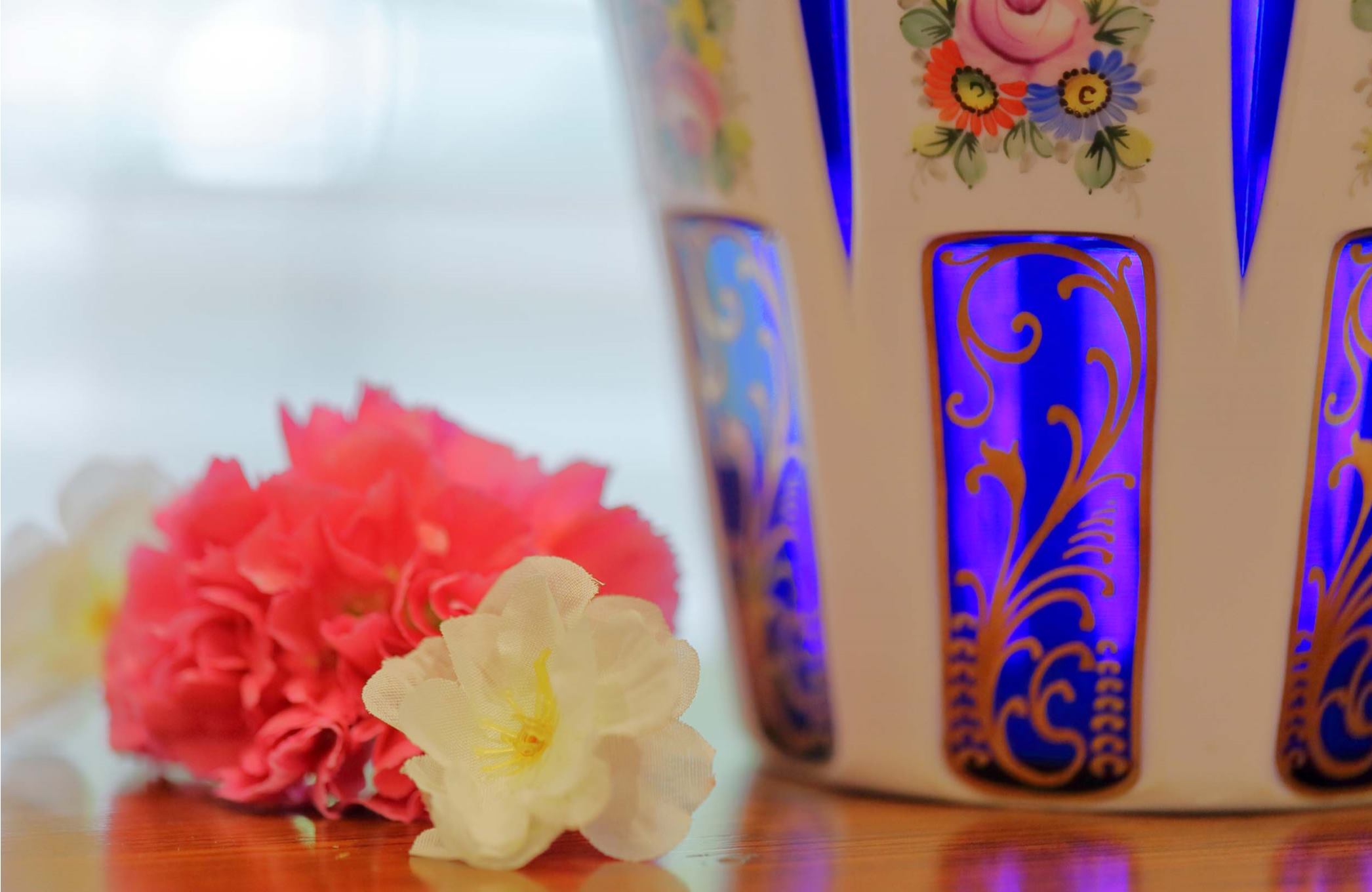

The history of glass in Bohemia dates back to the 13th
century, but it wasn't until the Art Nouveau movement
when the trade anddistributionof glassware spreadacross
Europe and South America, that it was internationally
recognised as an art form."When used in reference to
glass, "bohemian" is often used to describe 19th-century
faceted and engraved, bright-colored beakers, bowls,
goblets and vases,that were available throughout Europe,
America, and many other parts of the world." (Dedo
von Kerssenbrock-Krosigk, "The Tradition of the Avant-
Garde: Bohemian Glass, 1820-1935," Corning Museum of
Glass, 5 October 2011, online)
Tracing its origins to the present-day Czech Republic and
Poland (Bohemia and Silesia), Bohemian glass art evolved
from centuries of experimentation in glass-making.
The 16th and 17th centuries saw different traditions
of hand-cut and engraved glass styles develop, with
craftsmen adapting techniques such as gem engraving
on to the glass.Glass cutting methods in intaglio, where
designs were inscribed into the surface, and high relief
forms, acquired
sophistication.Inthe mid-19th century,
glassmakers started using opaque and colourful marbled
glass such as Marmoriertes and Lithyalin, making way for
the Art Nouveau period Bohemian glass that is renowned
today.Glass pieces during this period were often classic
vases that shaped to take the form of seashells, flowers,
and tree trunks.
There are two kinds of Bohemian glass works in this
exhibition. Lot 1 is the traditional, hand-cut decorative
glass, and lots 2, 3, 4 and 5 are double overlay glass pieces.
BOHEMIAN GLASS
(Lots 1‒5)
4
5


















